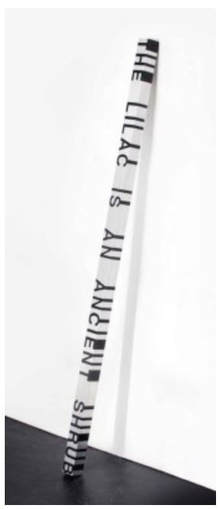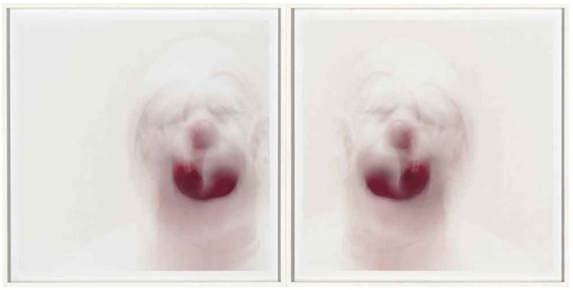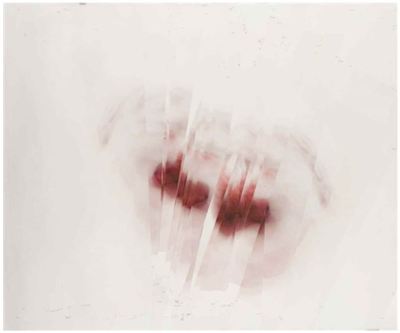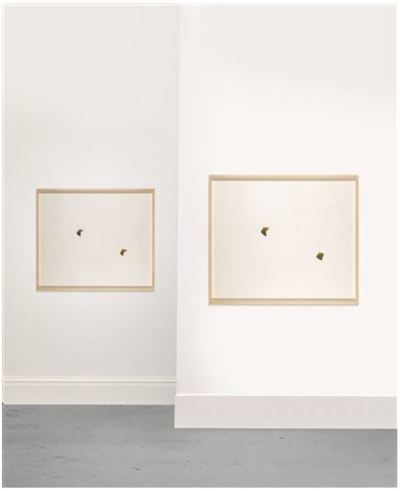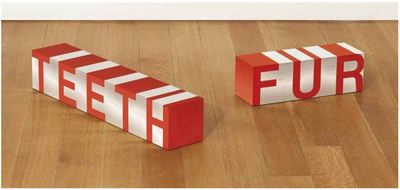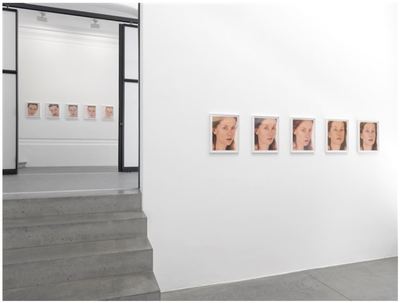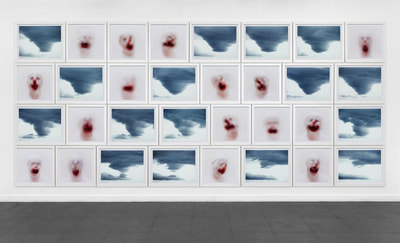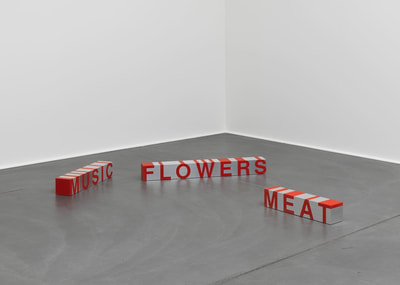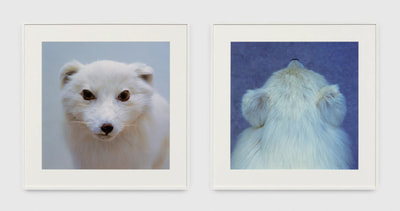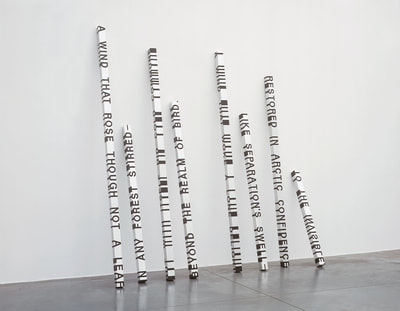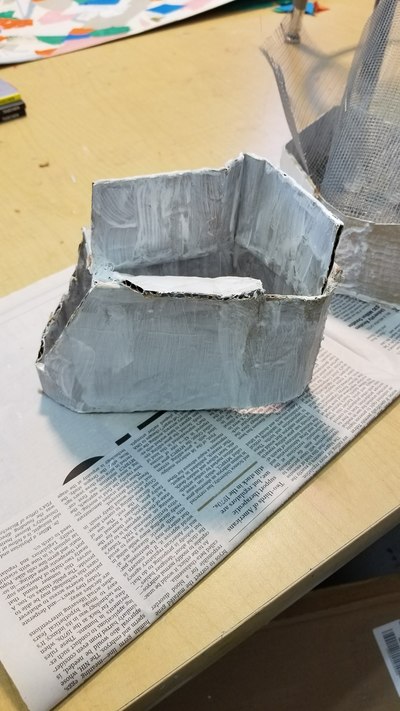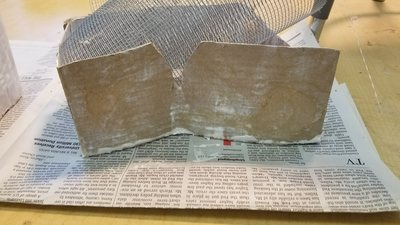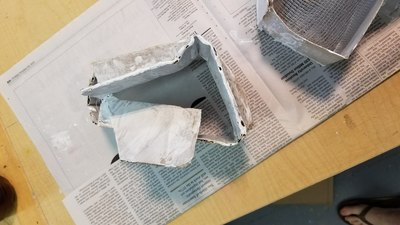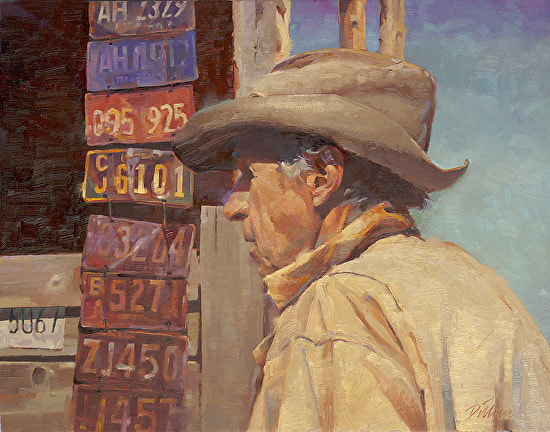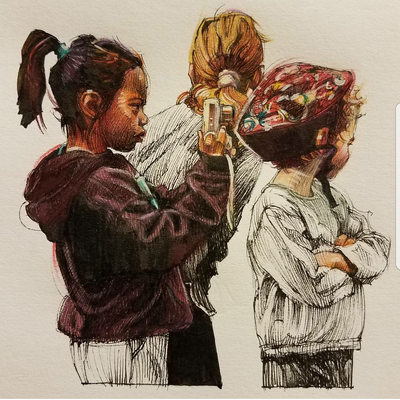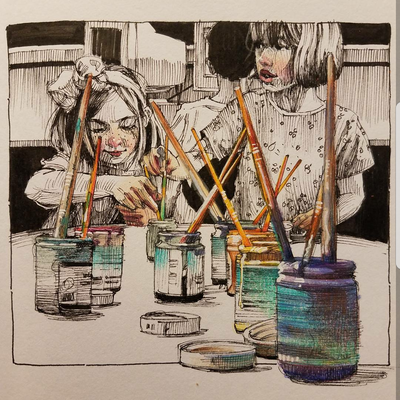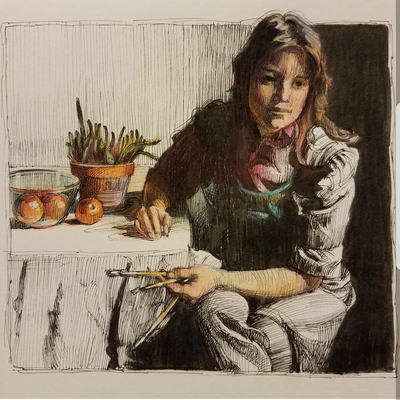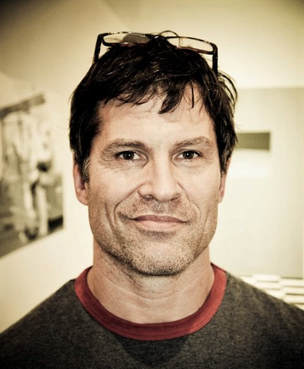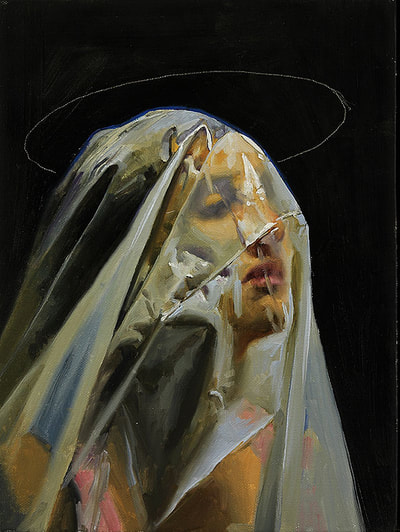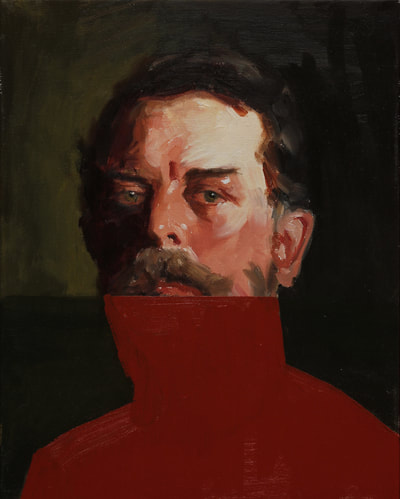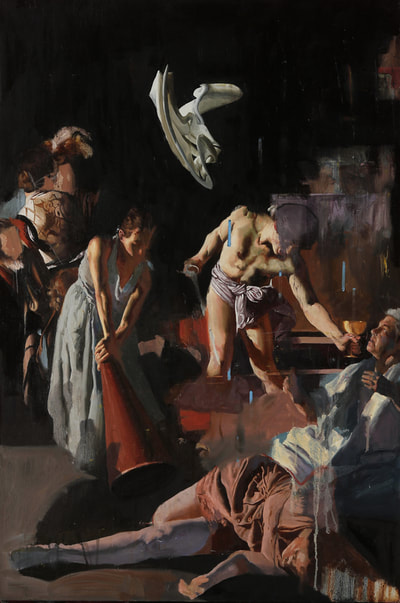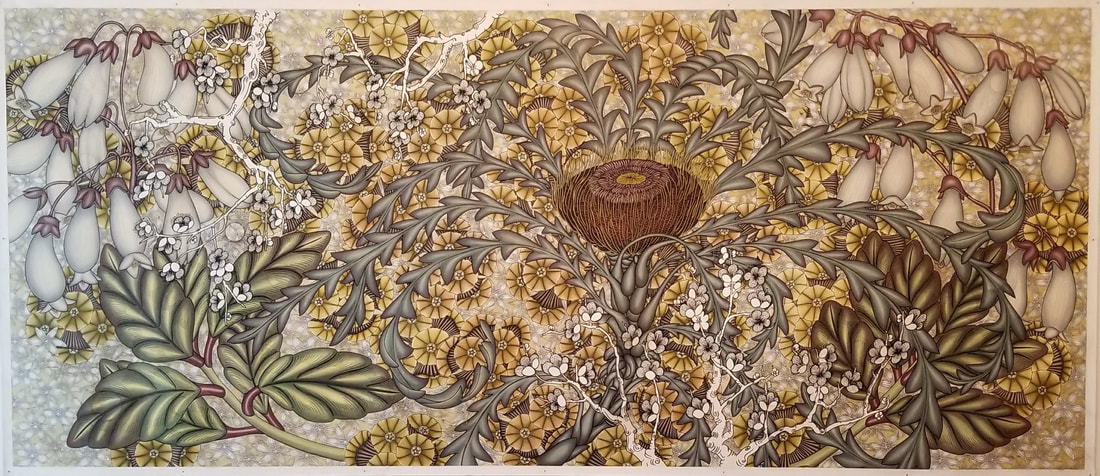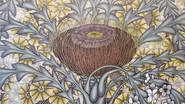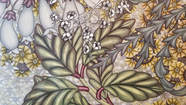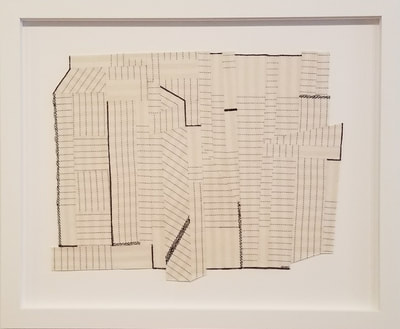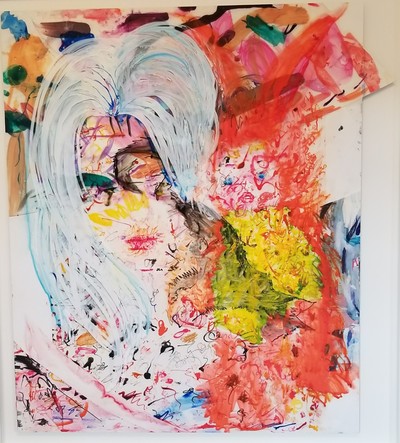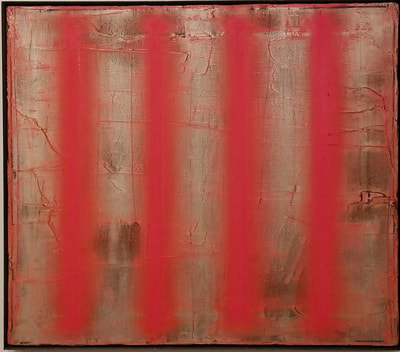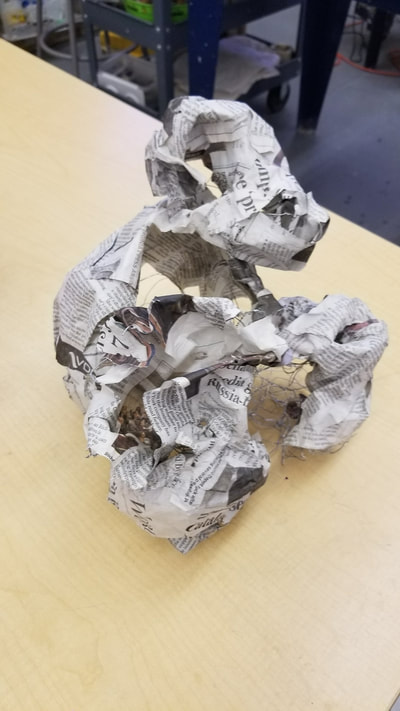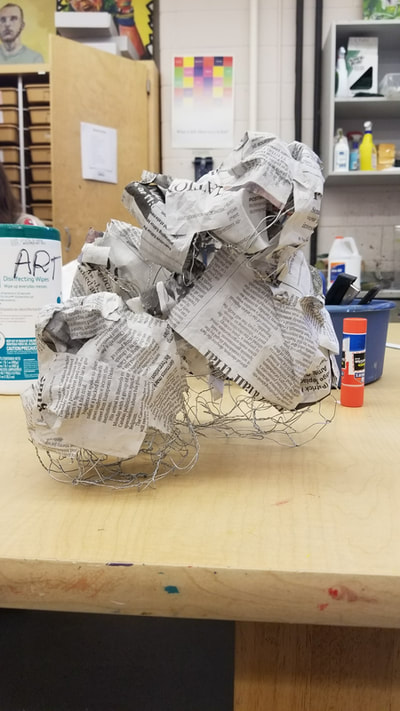1. Roni Horn, Clowd and Clown (Gray), 2000-2001, 32 C-prints, 30in×30in1.
2. Roni Horn, Clownmirror (9), 2001, C-print back-mounted on aluminium, in two parts, 29.8inx29.7in 3. Roni Horn, Portrait of an image, 2004, Prints and mutliples, Standard C print on Fuji Crystal Archive, mounted on 1/8'' sintra, 11inx13.5in 4. Roni Horn, Key and Cue, 1996, aluminium and black plastic, 61inx2inx2in 5. Roni Horn, DISTANT DOUBLE 3.17X AND 3.17Y, 1990, pigment and varnish on paper collage, in two parts, 29.5inx35in 6. Roni Horn, Kafka's Complaints, Selected (Fur and Teeth) (in 2 parts), 1992-2000, 5inx1.7inx5in 7. Roni Horn, Clowd and Cloun (Gray), 2000-2001, 32 C-prints, 30in×30in 8. Roni Horn, Kafka's Complaints, Selected (Music, Flowers, and Meat) (in 3 parts), 1992-2004, 5inxvariableinx5in 9. Roni Horn, Untitled (Artic Fox), 2000, 2 photographs on polyester, 30inx30in 10. Roni Horn, When Dickinson Shut Her Eyes- No. 1259 (A Wind That Rose Though Not A Leaf), 1993-2004, solid cast plastic (black) and aluminium, 30in×30in
25 Comments
I have been working one creating more of these pieces in order to create variety and some more interesting compositions. I hope to make at least two more with more dynamic compositions and textures, but theses should be entirely completed within one or two more studio days.
‘Mass executions, slavery... and copyright infringement: ISIS stole artist's photo and used it as propaganda to recruit new members via Twitter' This was an interesting article to read, and it makes me think more about what stolen artwork can be used for. Of course stealing anyone’s artwork is a bad thing, but I think that changing the content and original meaning of the artwork, especially in an attempt to perpetuate some sort of violence makes the offence much worse. I can only image the shock and horror that McCarty experienced when he found out what his art was being used for. The article quotes McCarty as saying that “’This project is about children’s experiences of war and is anti-war,’” and I think that this shows how drastically the meaning of the artwork was changed. This article makes me think about how slight changes in elements of our own work, such as the composition or the subject, can alter the meaning of it so much. It also makes me wonder about how my own work could be easily changed and ways to make it’s intended meaning either more explicit or more ‘vague.’ ‘Champions of Socialist Realism are seeking to restore it to what they see as its rightful place in Russian art history. But even as it attracts billionaire collectors and appears in prominent exhibitions, some ask whether the official style of Stalin can overcome its past’ This article quotes Herbert Read as saying ‘“Socialist realism is nothing but an attempt to stuff intellectual or dogmatic objectives into art.’” I think that while this has some truth to it, this is also true of many other movements and pieces of work. It is important to look at artists and the movements that they were a part of separately. As Lavery stated, “When you’re born is when you’re born; if you have a gift you have a gift,” and I agree that if you are working within these confines in a way that doesn’t contribute to the harm of innocent people, then your art deserves to be looked at in similar ways to art from other parts of the world. In some ways you could even view the artists whose only was Socialist Realism as ‘victims of their own art movement.’ Lavery then goes on to say that she “[doesn’t] see how the history matters,” but I happen disagree with this statement because even though this was one of the only options for many artists, it is still a form propaganda and needs to be considered both as simply that work of its artist and within the context of Social Realism. 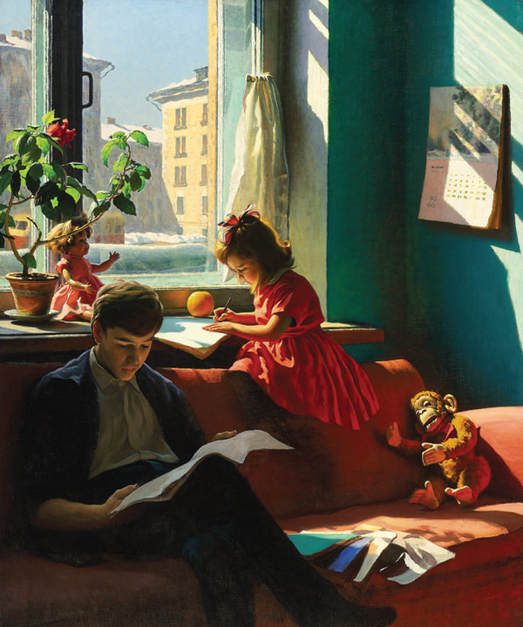
realistic looking. I also love the thoughtfulness when it comes to using color, and the negative space which is incorporated into nearly all of her work. I would love to incorporate some of these things into my art and use her work as inspiration for me to think about how I am using color and negative space in my art.
I really love how Adam uses a composition that you may be used to or feel comfortable with (for example, below you see some examples which at their base, look very similar to some traditional portraits or narrative paintings) and then changes or adds some element that surprises you and make the painting much more interesting. I especially like the painting that include a lot of texture, or those that mix textures and styles of painting. I would love to start painting a bit more and I think that incorporating multiple textures is something that I would love to do. Link:
Artist Website 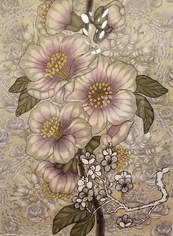 On November 15th we went on a walking field trip to many different galleries in Richmond, but my favorite gallery was probably the Reynolds Gallery. Here they had some artwork by Nancy Blum which I thought was really cool. I really liked the scale of her work and I think that I may want to experiment with scale as I continue to work. Even though some of her art was very big, the detail that she uses is incredible. There are tons of layers of detail within her work that make it so incredible, and much of the detail you can't see unless you get really close. This was always something that I had been interesting in trying out, but now that I saw her work, I think that I will definitely find some way to incorporate small and intricate details in some of my work because I think that it is such an interesting effect. Along with loving Nancy Blum's work, I also really liked how this gallery was set up. Below is some more are from the Reynolds Gallery which I enjoyed. The fact that it was in a house made it really interesting to me and some of the ways that different pieces of art were displayed inspired me to think about the different ways that I can display my own art.
I really enjoyed these articles and thought that this is a very interesting and important topic within art that we should discuss. One thing that I though was very interesting was how exhibits were created with both the past and present in mind.
There are a few things that I wonder about conflict in the future and how depictions of either conflict or war will develop in art and what will change in how we think about war. Below I have included a few questions that I have about how our perception of violence and suffering will change in the future...
This is an interesting video that talks about more recent events that happened in Ukraine and how artists and curators reacted to these events and reflected on the present as well as on Ukraine's history. I think that this example pulls together quite a few different elements from the two different articles and allows you to see how an exhibit could be created and why with more modern context. I have been sick over the past few weeks and missed a few in class studio days and feel a bit behind. I have everything planned out and have started creating the final layer of my paper mache. I have also started working on the armatures for the three hanging parts that makeup my piece. I am thinking that if I end up not having enough time for all three, I will be able to cut down on the number of pieces that I use. I may end up cutting down on that number even if I have enough time for more depending on how the composition looks when all three of them are finished. I am excited for this piece because although it has many of the same elements of my other pieces, it also gives me the chance to explore other ways of displaying and thinking about my art.
I have finished building the armature for my sculpture as well as started covering it in newspaper. I am still working on thinking about how I want to present it, either hanging or sitting on a pedestal. So far I am leaning towards sitting on a pedestal, but as the composition continues to evolve I will keep hanging an option.
|
